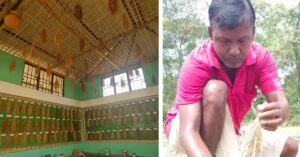A Tale of Two Sanctuaries – Orang And Nameri National Parks In Assam
When a virulent epidemic called Black Fever struck their village, all the villagers vacated the place and never returned. Nature healed itself and now it is the location of one of India's most beautiful sanctuaries. Join Gangadharan Menon as he unearths the legends and mysteries surrounding the beautiful Orang and Nameri national parks in Assam, in addition to its stunning wildlife!

When a virulent epidemic called Black Fever struck their village, all the villagers vacated the place and never returned. Nature healed itself and now it is the location of one of India’s most beautiful sanctuaries. Join Gangadharan Menon as he unearths the legends and mysteries surrounding the beautiful Orang and Nameri national parks in Assam, in addition to its stunning wildlife!
What’s now Orang National Park was a densely populated tribal village exactly a hundred years ago. But the villagers deserted their homes en masse when a virulent epidemic called Black Fever struck their village; and they never returned.
Over the next hundred years Nature healed herself, tree by tree. And today Orang is one of the most beautiful sanctuaries of Assam, and has earned the sobriquet of Mini Kaziranga.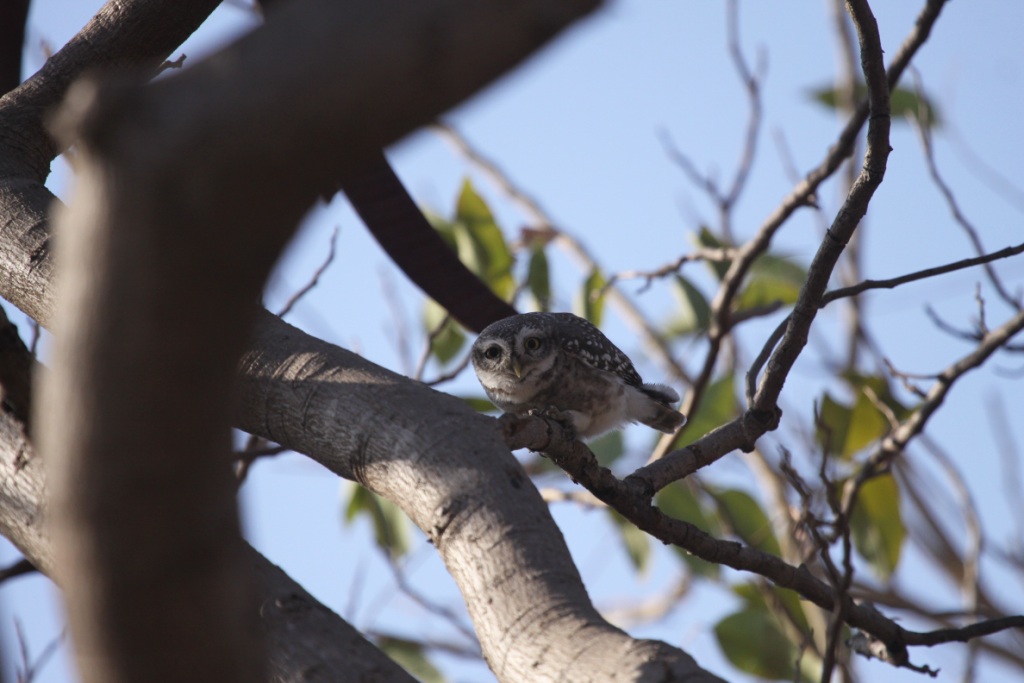
All along our drive from Guwahati, one could see a phenomenon that’s unique to this state and the faraway state of Kerala. There were innumerable pukhuris or ponds here, one in every house. In Kerala, they are called kulams. But in both these states, the ponds are steadily being filled to satisfy the greed for land. Little realizing that it’s these ancient ponds that maintain the water level in the nearby wells.
We passed by Mangaldoi, better known as the vegetable farm of Assam, and the farmlands stretched as far as the eye could see, without a single tree to obstruct the view!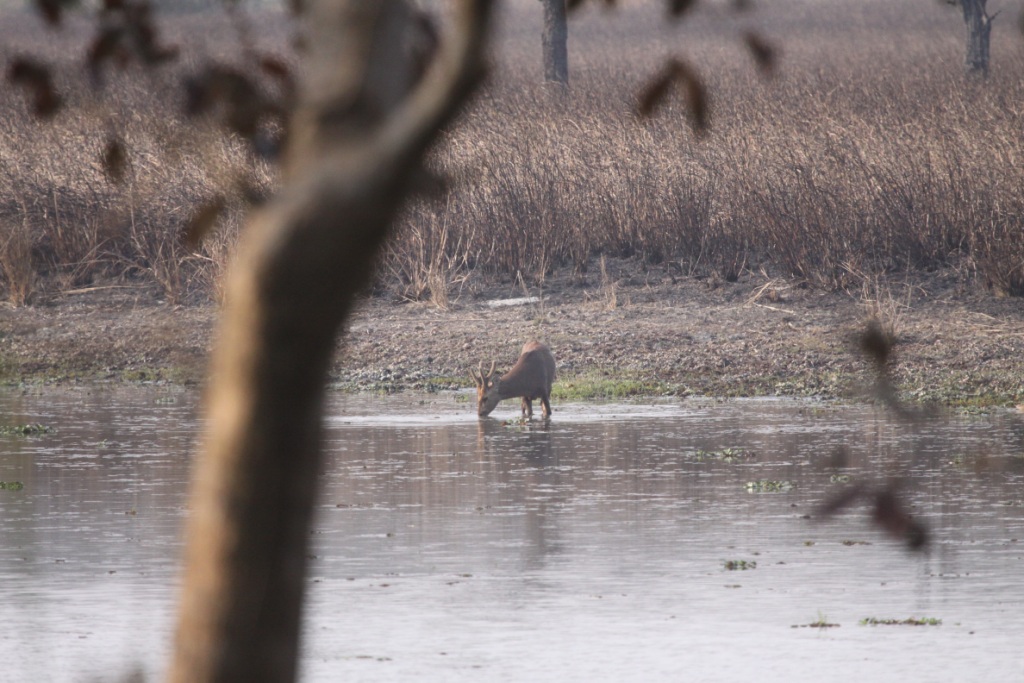
On the outskirts of Silbori village we saw a very intriguing sight. The school-going kids here had two distinct sets of uniforms: one for Ahomis and another one for Bodos. An indication that ethnicity runs deep, very deep.
At the far end of this village was the gate to Orang National Park. And on the fringe of the forest was our abode for the day: Prashaanti Tourism Complex with a gallery view of the forest.
When we woke up, the forest was missing. Slowly the morning mist that enveloped the whole forest moved away, revealing it layer by layer. We drove through the mist, the driver steering the jeep more by instinct than by sight. And lo and behold, there was a lone one-horned rhino in the distance, emerging from the mist like a pre-historic animal. When the mist finally cleared, it laid bare a stunning tapestry of green grasslands dotted with blue waterbodies, the kind you see in nearby Kaziranga and faraway Dudhwa, both of which are the preferred habitats of the endangered one-horned rhino.
The jeep soon stopped at the forest quarters, where our guide Sunil showed us the overnight pugmarks of a tiger, and the horn-marks on the mudwalls of a rhino desperately needing mineral supplements.
We had an inquisitive co-traveller on our return. An owlet would fly ahead of us and patiently wait for us to catch up, and the moment we did, it would fly again to the next waiting branch, almost as if inviting us to come and take a photograph, which eventually I did. And then it disappeared.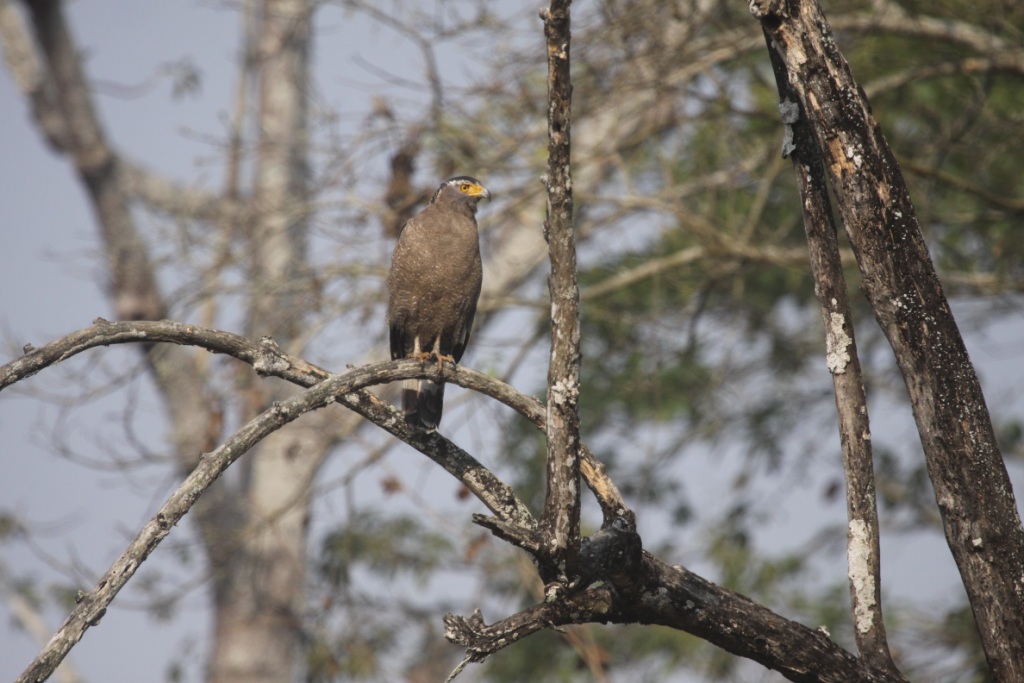
Then there was the hog deer peering from behind a tree, a crested serpent eagle strategically perched on a tree top, a green pigeon that flashed past as a green streak, a rose-ringed parakeet that landed in slow motion next to its nest, and a warbler delicately balancing on a moving blade of tall grass.
Back at the forest gate, as we were sipping black saay (that’s how an Ahomi pronounces chaay!), we saw a tame baby elephant Kaancha nibbling at the oltenga fruit, considered a delicacy by the elephants. And I thought to myself that good taste is inborn.
Nameri National Park
This park has a completely different topography from Orang and it adjoins the neighbouring state of Arunachal Pradesh.
A gentle walk of a kilometre from the Eco Camp takes you to the banks of the Jia Bhoroli river that is teeming with golden mahseer. And across the blue river you get the first panoramic view of this stunningly beautiful sanctuary.
A ride in a country boat takes you across to the forest department jetty, and then you walk on sparkling white pebbles that remind you of pre-historic eggs. The puddles on the riverbank has reddish-brown algae and that adds to the special aura of this landscape.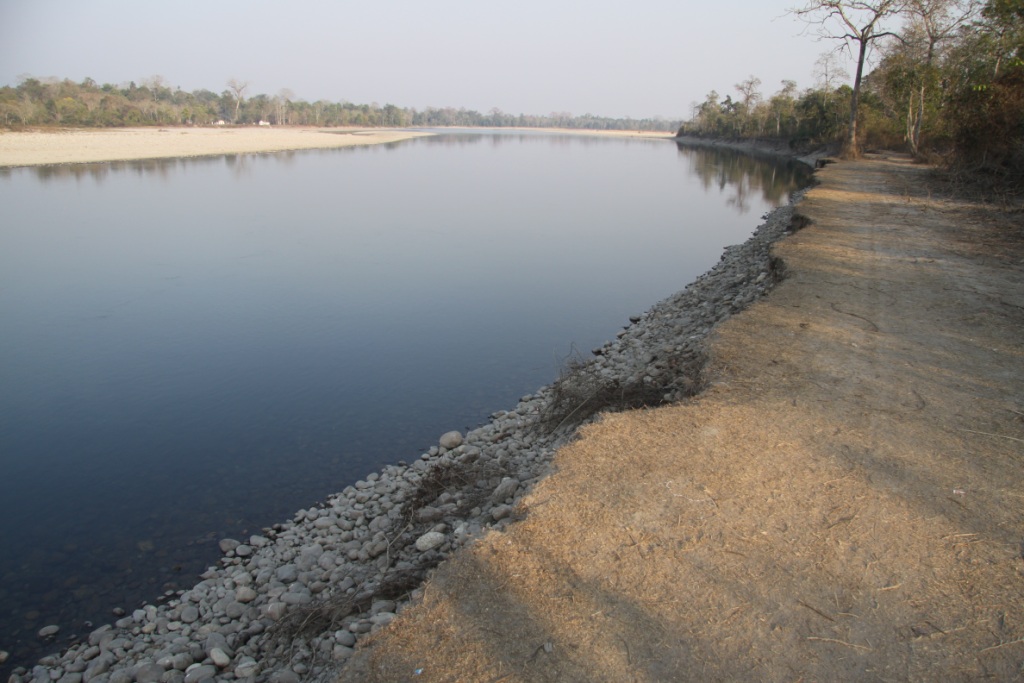
In the distance I saw a pair of ruddy shelducks, and the guide told us about a local myth. The fact that theseducks move around in pairs during the day, and sleep separately in the night, is interestingly explained in this story.
It’s believed that Lord Ram came to these forests looking for Sita when she was kidnapped by Ravan. When he came across a lovey-dovey pair of shelducks, he asked them if they had seen Sita. To which the haughty male shelduck retorted, ‘What kind of a husband are you that you can’t even look after your wife?’ Hearing this unjust insinuation, Ram turned as red as the ruddy shelducks and cursed them. ‘Henceforth, you will only be together during the day. In the night you will be separated, and you will spend the whole night pining for each other!’ And the curse continues to be valid to this date.
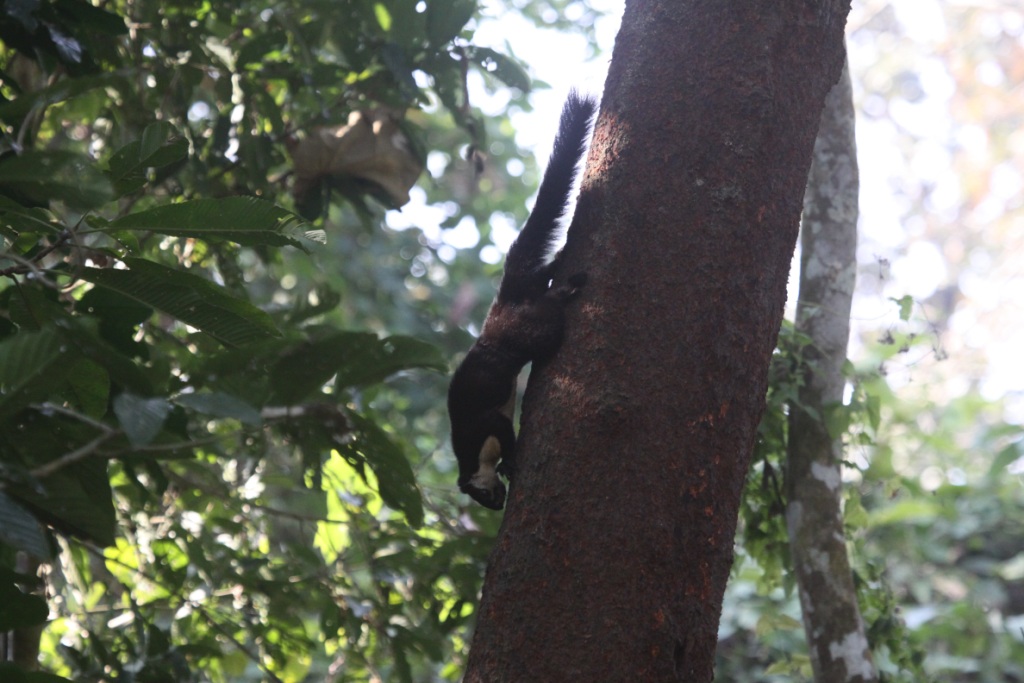
The forest guard who doubled up as our guide proudly carried an antique single-barrel gun that hung from his shoulder on a frayed rope about to give way. As he walked in front of me, I kept stealing glances at the rope, wondering when it will break, and the gun will come crashing down to the ground and go bang! Every guard in the forests of Assam has one such gun purportedly to be used against crouching tigers and hidden terrorists. But eventually it remains a mere psychological booster than a weapon of any significant use.
A few yards into the dense part of the forest, and there were tell-tale signs of a rampaging herd of elephants. The guide took a real close look at their dung, made a quick forensic analysis, and declared that it was around 48 hours ago that they were here. Heaving a sigh of relief, we continued on our exploration. Only to run into a lone tusker fortunately separated from us by the security of a river in spate.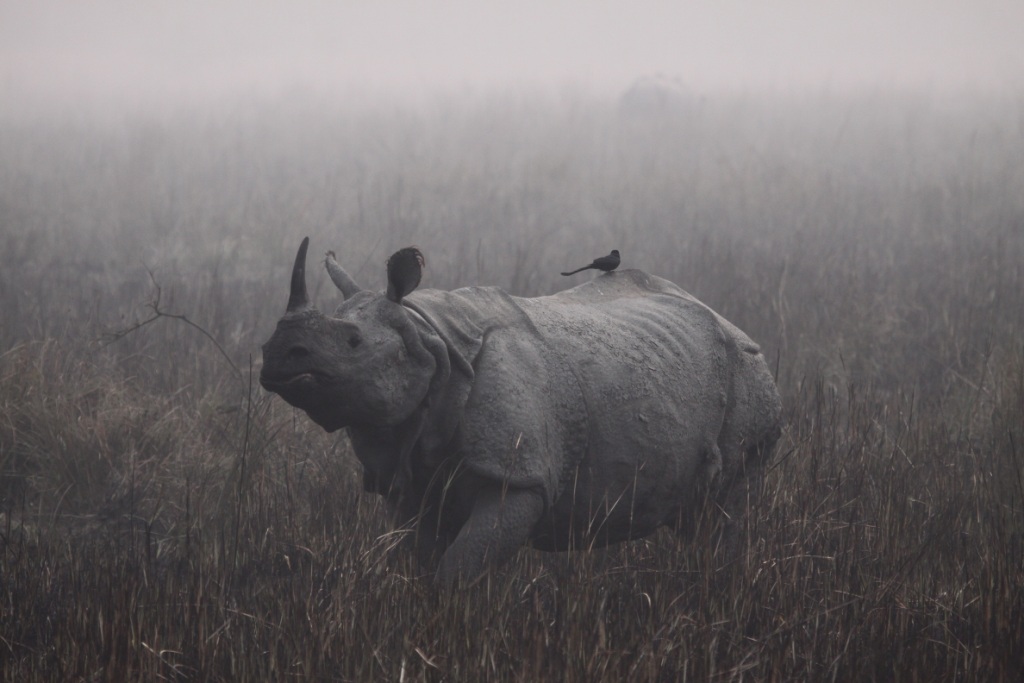
Further ahead was the claw-marks of a sloth bear on a tree trunk. Looking up we saw a bee-hive that must have drawn him here like a magnet.
Then we came across a patch of silk-cotton trees, leafless but with a flaming efflorescence covering the treetops. Flashes of colour were added to this flower garden: by green bee-eaters, scarlet minivets, emerald doves, red-whiskered bulbuls, golden orioles and purple sunbirds.
Ahead on an oltenga tree, I saw an animal seen only in the North-East: the Malayan squirrel. And this underlined the ecological fact that these beautiful forests were once contiguous with the verdant forests of Myanmar, Thailand, Malaysia andIndonesia.
Yes, much before the world became a global village, it was a global forest.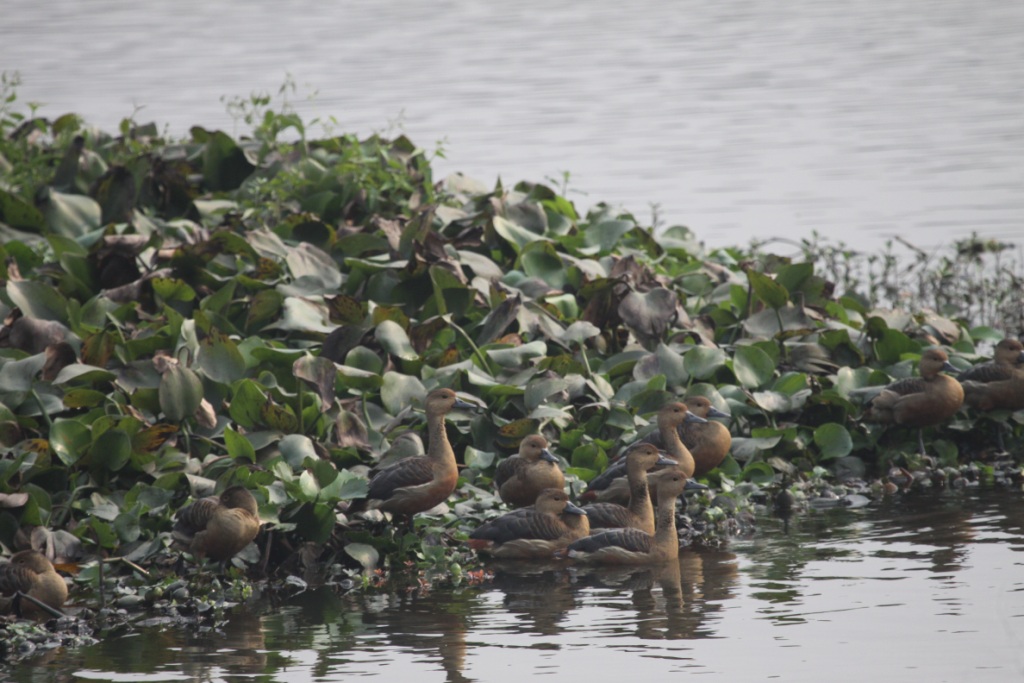
How to reach:
Orang is around 140 kms from Guwahati on the Guwahati-Tezpur Road, 40 kms before Tezpur.
Nameri is around 215 kms from Guwahati, 35 kms after Tezpur.
Where to stay:
Orang: Prashaanti Tourism Complex. Call +919854165351 or +919854003188 for bookings.
Nameri: Eco Camp. Call office on 03712220004 or Pradip on +919957199227 or mail [email protected]
Like this story? Or have something to share? Write to us: [email protected], or connect with us on Facebook and Twitter (@thebetterindia).
This story made me
- 97
- 121
- 89
- 167
Tell Us More
We bring stories straight from the heart of India, to inspire millions and create a wave of impact. Our positive movement is growing bigger everyday, and we would love for you to join it.
Please contribute whatever you can, every little penny helps our team in bringing you more stories that support dreams and spread hope.






